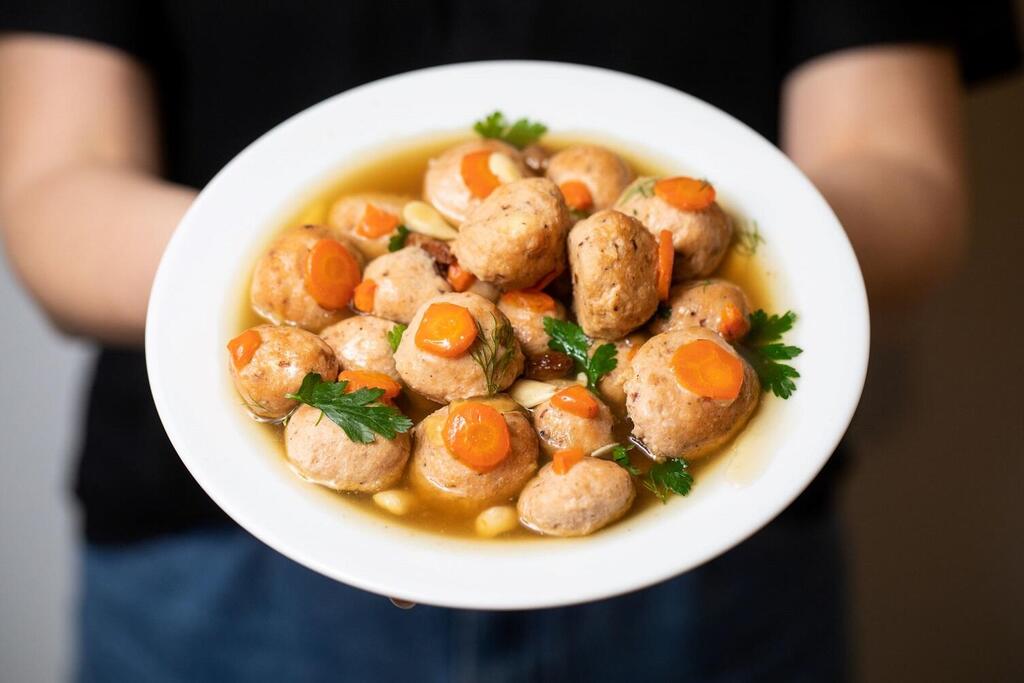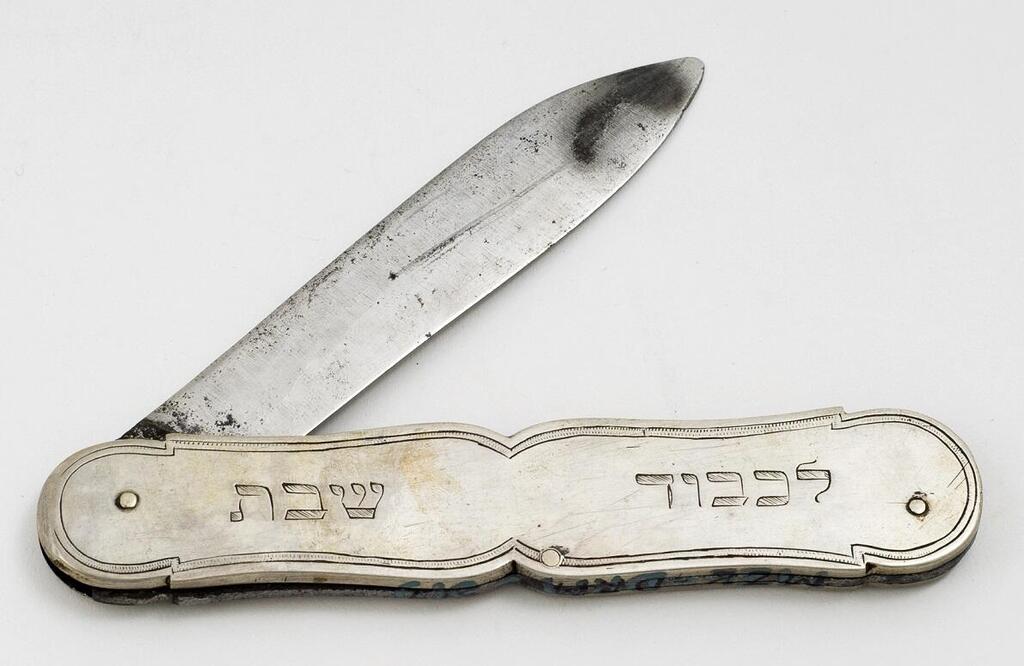"The Jewish kitchen, while frequently maligned, deserves much respect," says Gil Hovav, an Israeli food correspondent of 30 years. "It's varied, vegan friendly and is not loaded with meat and fats like French cuisine."
So why do Israeli chefs receive more praise than Jewish food?
"Israeli cuisine is colorful, photogenic and Instagram-friendly, so people find it easier to connect to it. The Jews of eastern and central Europe, by comparison, have very muted colors in their food. I actually think that's the best kind of food there is, so I hope it'll find a way to gain popularity."
"what's cooking?" exhibit in POLIN museum
(Video: Maciek Jazwiecki)
The interview with Hovav was conducted ahead of the opening of a new exhibit in the POLIN Museum of the History of Polish Jews, dedicated to Jewish heritage, and displays Jewish food on both sides of the Atlantic. If you wish to know how to make Matza-ball soup, gefilte fish or other Jewish favorites, this is the place for you.
Jewish Moroccan recipes like chraime (spicy fish stew), caponata which is a favorite of Italian Jews, maqluba (meat, rice and vegetable dish) from Turkish Jews and so much more will be on display.
Charoset is marked with the saying, "one of eight symbolic and mandatory foods on every Passover table".
Alongside the recipes, you can find an explanation of how Jewish migration patterns shaped modern Jewish cuisine. A section entitled "Personal Memories" is filled with examples from restauranteurs who reminisce about how mom's cooking shaped their culinary worldview.
Several items are featured as well. Dough-flattening machines, curved knives for challah bread carving, a spoon set that belonged to a Jewish family that perished in the Holocaust and others.
Since the exhibit is for non-Jews as well, it features explanations about Kosher rules and guidelines, including what animals are considered Kosher to eat and which aren't (Hint - they're known for rolling in mud).
Many interviews and lectures are on hand to explain everything there is to know, as Jewish cuisine can be a whole universe in itself. Prof. Barbara Kirshenblatt-Gimblett, the museum's chief curator, runs down the history of Jewish cookbooks.
Only eight years old, the museum is located in Warsaw's Muranow District, famed for its political street art and Socialist Realist housing. It was once part of a Jewish extermination camp during the Holocaust.
If you can't travel, don't worry about it. Just log on to the exhibit's website and you'll enjoy a full virtual tour with translations to both English and Hebrew.
"This museum is incredible," says Hovav. "There's a reason it won the 2016 European Museum of the Year Award. What makes it unique is that it was not designed to show death and suffering, but rather to celebrate life and a thousand years of Polish Jewry. The organizers know that Jewish food is more than gefilte fish and chamin. There's representation from Jewish communities everywhere."
Cuisine that is poor, yet creative
As far as Hovav is concerned, food is tied to memories. "I remember Yemeni food from visiting my grandmother in the Katamon neighborhood of Jerusalem.
"In our home in the Kiryat Shmuel neighborhood, I had a Sephardi grandmother and the food went accordingly. I was never allowed in the kitchen, as it is tradition that men can never enter because all they bring is dirt and bad luck.
"I was a 20-year-old soldier when she died, so I began cooking her dishes to keep her alive in my mind. I cooked her dishes in Warsaw, Moscow, Sydney and New York, so I'm spreading her culinary brilliance around the world."
Jewish cuisine is characterized by poverty-induced improvisation
"As my friend Chef Shmil Holland would attest," Hovav said. "Poverty is the driver of creativity, and it comes across very profoundly in Jewish cuisine. A great example is actually in northern Italy, with a culinary approach known as "cucina povera", which means "poor kitchen". I wrote about it on my website FOODSPY. It was a very poor kitchen that had to resort to creative manipulations and improvisations in order to produce great food."
Kosher on a spectrum
While the Warsaw exhibit pays much attention to how Jews kept many of their Jewish customs while integrating with foreign cultures, they didn't necessarily keep Kashrut at all times.
"It put the kashrut issue on a spectrum," Hovav said. "It depended on which sect of Judaism you were a part of and how readily available was Kosher food where you lived. In the past, all Jewish cuisine kept Kosher as a distinguishing feature. Today, many Jews worldwide don't keep it in mind as much anymore."
Speaking of abandoning tradition, many have given up on Shabbat dinner as well.
"While I did grow up in a secular home, I'm still mindful of Friday night dinners for our entire family, and I still highly recommend it."
What culinary tradition have you instilled in your daughter?
"She is completely apathetic to cooking and nowadays asks me to order Sushi. Personally, I wouldn't touch it with a 10-foot pole."






